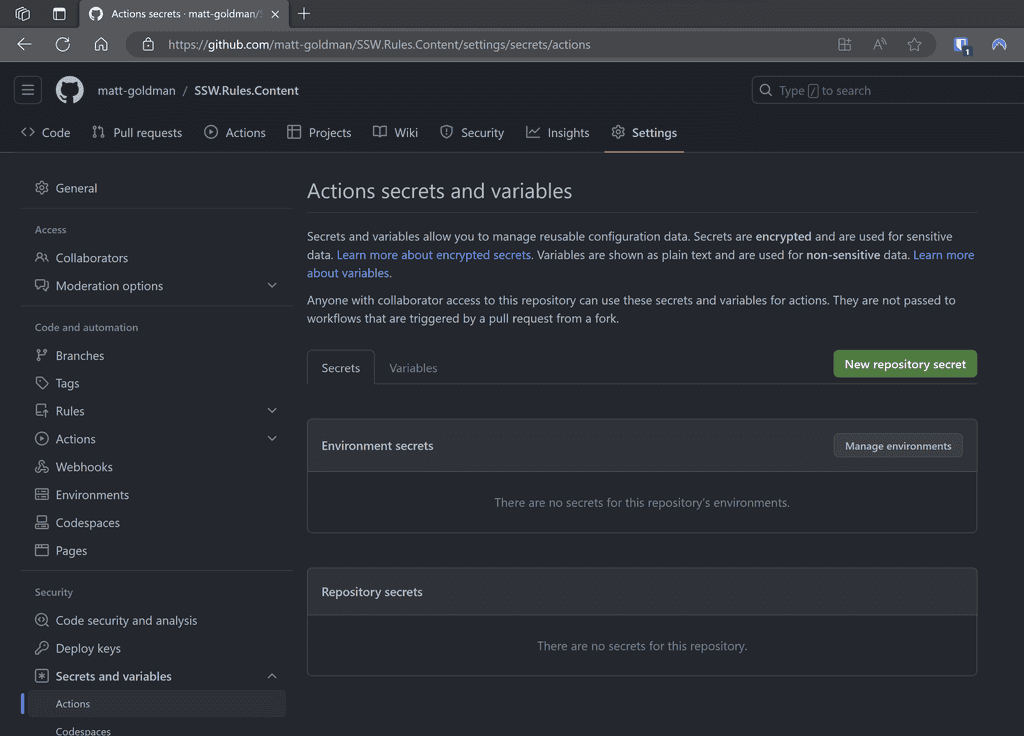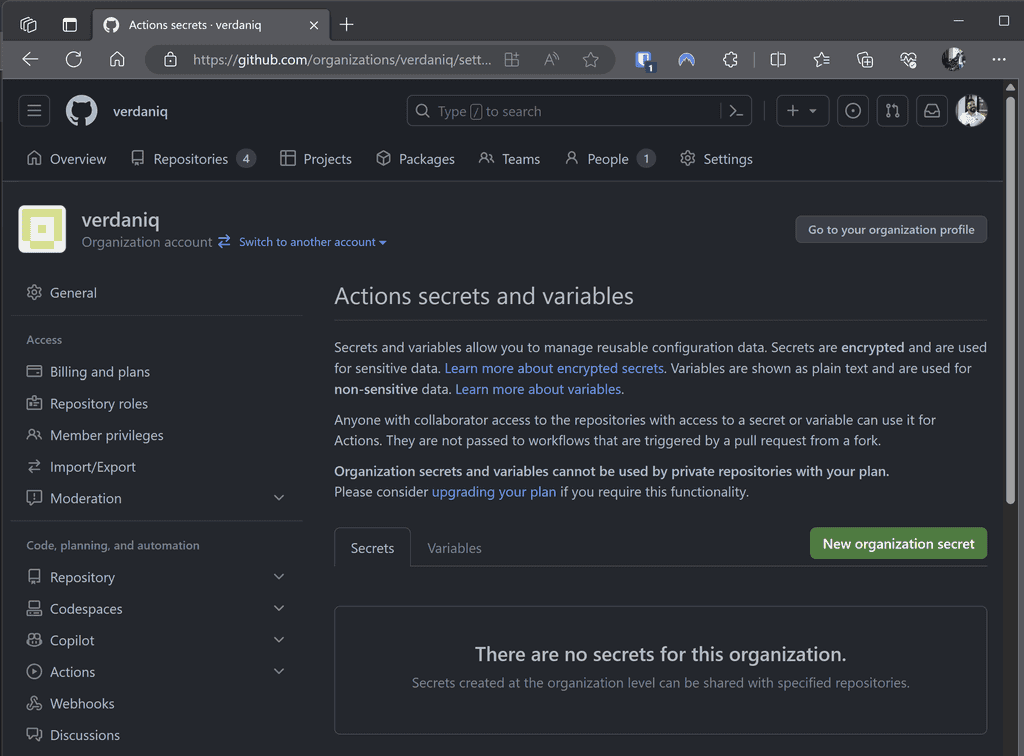Rules to Better DevOps using Azure DevOps (Pipelines) - 8 Rules
If you still need help, visit our DevOps consulting page and book in a consultant.
Learn more about Scrum with Azure DevOps.
The goal of DevOps is to improve collaboration and communication between software development and IT operations teams, in order to deliver high-quality software products quickly and efficiently.
DevOps aims to automate the software development and delivery process, by implementing practices such as continuous integration, continuous delivery, and continuous deployment. This helps to reduce the time it takes to develop and release software, while also improving the quality and reliability of the final product.
You should know what's going on with your errors and usage.
The goal should be:
A client calls and says: "I'm having problems with your software."
Your answer: "Yes I know. Each morning we check the health of the app and we already saw a new exception. So I already have an engineer working on it."
Take this survey to find out your DevOps index.
Before you begin your journey into DevOps, you should assess yourself and see where your project is at and where you can improve.
Once you’ve identified the manual processes in Stage 1, you can start looking at automation. The two best tools for build and release automation are Github and Azure DevOps.
See Rules to Better Continuous Deployments with TFS.
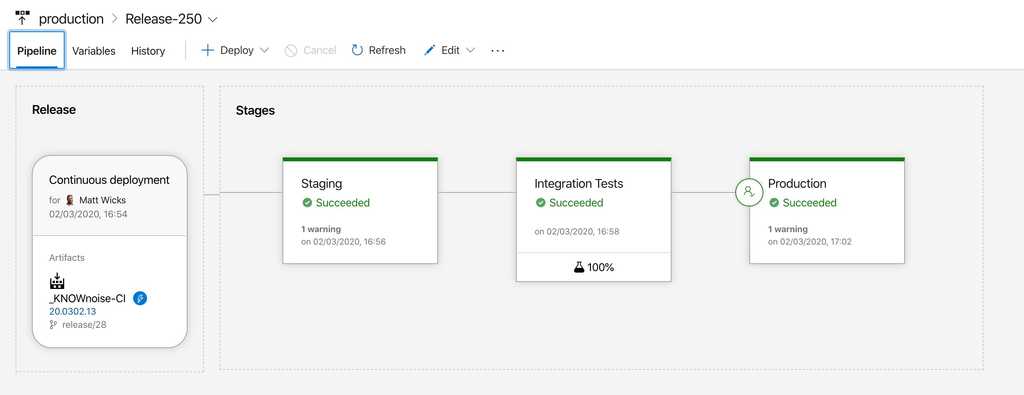
Figure: In Azure DevOps you can automate application deployment to a staging environment and automatically run tests before deploying to production 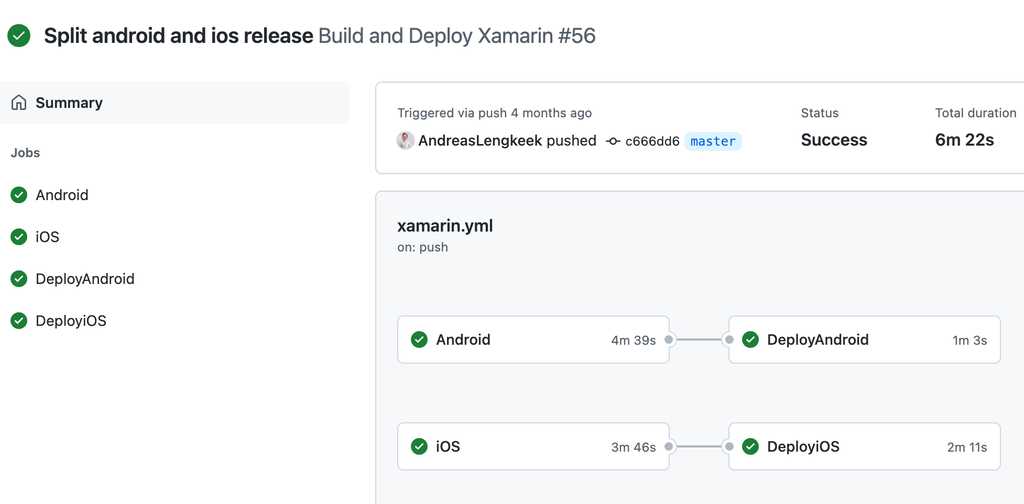
Figure: In GitHub actions you can automate application deployment to a multiple environments and automatically run tests before deploying to production Now that your team is spending less time deploying the application, you’ve got more time to improve other aspects of the application, but first you need to know what to improve.
Here are a few easy things to gather metrics on:
Application Logging (Exceptions)
See how many errors are being produced, aim to reduce this as the produce matures:
- Do you use the best exception handling library?
- Application Insights
- RayGun.io
- Visual Studio App Center(for mobile)
But it's not only exceptions you should be looking at but also how your users are using the application, so you can see where you should invest your time:
- Application Insights
- Google Analytics
- RayGun.io (Pulse)
Application Metrics
Application/Server performance – track how your code is running in production, that way you can tell if you need to provision more servers or increase hardware specs to keep up with demand
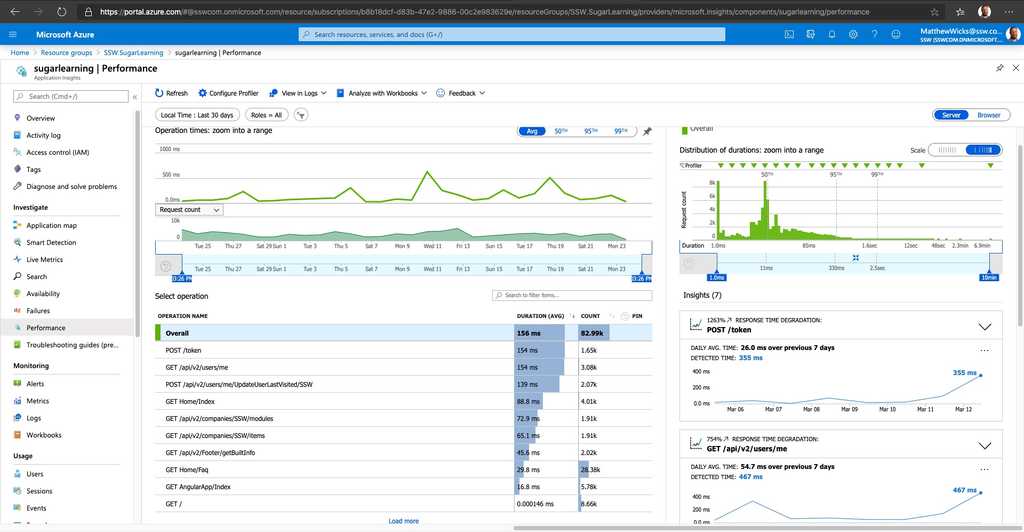
Figure: Application Insights gives you information about how things are running and whether there are detected abnormalities in the telemetry 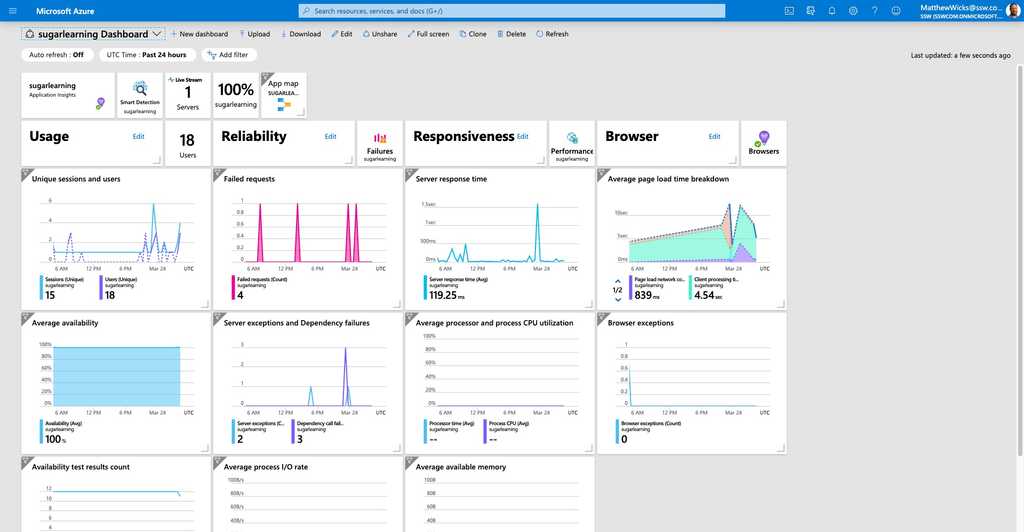
Figure: Azure can render the Application Insights data on a nice dashboard so you can get a high level view of your application 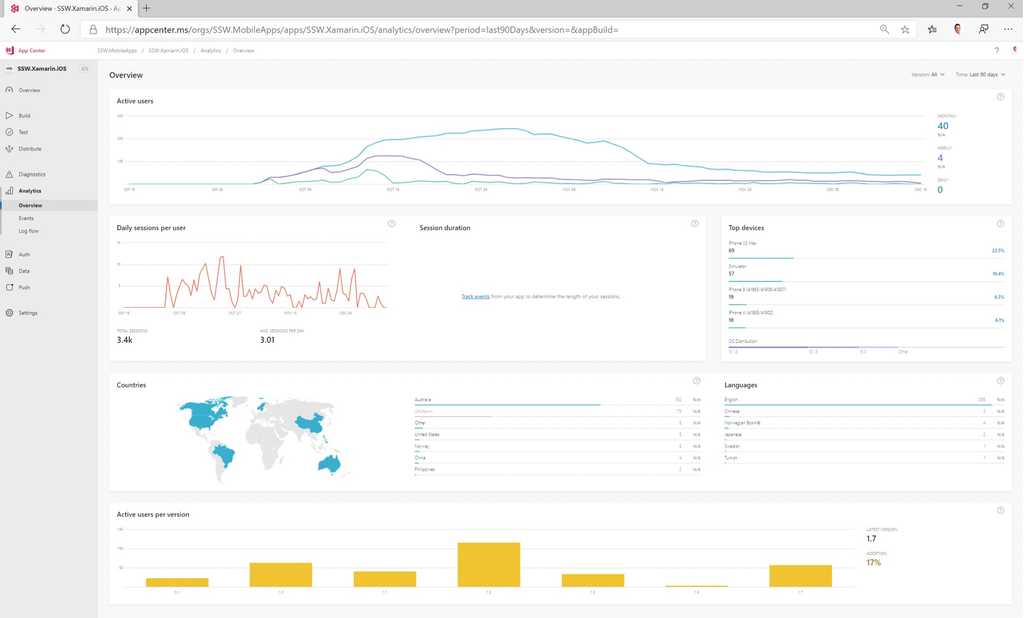
Figure: App Center can let you monitor app install stats, usage and errors from phones just like an app running in Azure Process Metrics
Collecting stats about the application isn't enough, you also need to be able to measure the time spent in the processes used to develop and maintain the application. You should keep an eye on and measure:
- Sprint Velocity
- Time spent in testing
- Time spent deploying
- Time spent getting a new developer up to speed
- Time spent in Scrum ceremonies
- Time taken for a bug to be fixed and deployed to production
Code Metrics
The last set of metrics you should be looking at revolves around the code and how maintainable it is. You can use tools like:
- Code Analysis
- SonarQube
Now that you’ve got the numbers, you can then make decisions on what needs improvement and go through the DevOps cycle again.
Here are some examples:
-
For exceptions, review your exception log (ELMAH, RayGun, HockeyApp)
- Add the important ones onto your backlog for prioritization
- Add an ignore to the exceptions you don't care about to reduce the noise (e.g. 404 errors)
- You can do this as the exceptions appear, or prior to doing your Sprint Review as part of the backlog grooming
- You don't have to get the exception log down to 0, just action the important ones and aim to reduce the noise so that the log is still useful
- For code quality, add getting Code Auditor and ReSharper to 0 on files you’ve changed to your Definition of Done
- For code quality, add SonarQube and identify your technical debt and track it
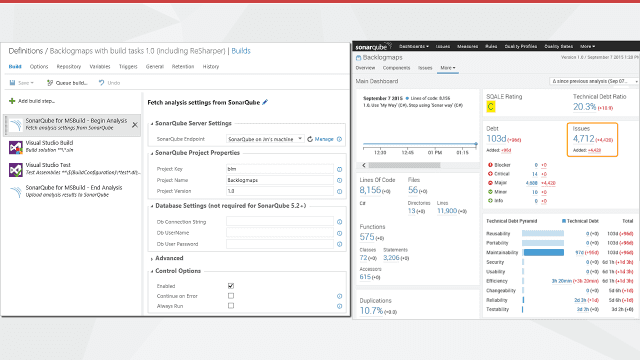
- For application/server performance, add automated load tests, add code to auto scale up on Azure
- For application usage, concentrate on features that get used the most and improve and streamline those features
-
DevOps Learning Resources
- Azure DevOps: https://azuredevopslabs.com
- GitHub Universe: https://githubuniverse.com
- Book: The Phoenix Project
- Read: https://sre.google/
Great general advice
- Blog: Microsoft DevOps Journey
-
Watch: The DevOps Journey So Far
- Great overview of the scope of DevOps
Important Tech to skill up in
Reviewing Projects
When reviewing projects make sure to ask these questions. See survey on: https://www.ssw.com.au/rules/things-to-measure
- Onboarding - How quick is f5?
- Deploying - How quick is deployment?
- Daily Health - Are the errors visible?
- Documentation – Check wiki to see documented process
- Deploying - Don’t duplicate builds/steps etc
Managing secrets is hard. It's not just about storing them securely, but also ensuring that the right people and systems have access to them in a controlled manner, with an auditable trail, while minimizing friction for the processes that legitimately need them, like DevOps pipelines. You wouldn't leave your front door key under the mat, but at the same time you don't want it to take 7 minutes and approval from 4 people to unlock your front door.
In a development ecosystem, secrets are the lifeblood that makes many processes tick smoothly – but they're also a potential point of vulnerability. When multiple repositories and workflows require access to shared secrets, like an Azure Service Principal or credentials for a service account, the management overhead increases. Imagine the pain of secrets expiring or changing: the need to update each and every repository that uses them emerges. Beyond the inconvenience, doing this manually for each repository is not only tedious but fraught with risks. An erroneous secret entry might break a CI/CD pipeline or, even worse, pose a security risk. Let's explore ways to handle secrets more efficiently and securely.
Scenario: Every time a new repository is set up, developers manually add secrets to it.
Problems:
❌ High maintenance if secrets need to be changed or rotated.
❌ Greater risk of inconsistencies between repos.
❌ Increased vulnerability surface area – each repo is a potential leak point.Scenario: Instead of per repo, secrets are added at the GitHub organization level.
Advantages:
✅ Easier management as secrets are centralized.
✅ Reduced chances of inconsistencies.
✅ Less manual work for individual repos.❌ Still a concern - While more efficient, secrets still reside within the CI/CD tool and can be exposed if the platform is compromised.
Scenario: Secrets are stored in Azure Key Vault and accessed by various workflows as needed.
name: Deploy API on: push: branches: - main jobs: deploy: runs-on: ubuntu-latest steps: # Check out your code - name: Checkout code uses: actions/checkout@v2 # Login to Azure - name: Login to Azure uses: azure/login@v1 with: creds: ${{ secrets.AZURE_CREDENTIALS }} # Note you need this credential in GitHub # Fetch the API key from Azure Key Vault - name: Get API key from Azure Key Vault run: | az keyvault secret show --name SSW_REWARDS_API_KEY --vault-name kv-rewards --query value -o tsv > api_key.txt id: fetch-key # Use the API key in a subsequent step - name: Deploy with API Key run: | API_KEY=$(cat api_key.txt) # Your deployment commands using the API_KEY # (Optional) Logout from Azure - name: Logout from Azure run: az logoutListing: Secrets stored in a dedicated Key Vault in Azure and used by workflows across the organization
Advantages:
✅ Stronger security - Azure Key Vault provides enhanced encryption and access control.
✅ Centralized management - Rotate, update, or revoke secrets without touching individual repos or workflows.
✅ Auditing - Track who accesses what and when.❌ Still a concern - Dependencies on external systems can introduce complexities and may require specific expertise to manage.
Scenario: Secrets are stored in an enterprise-grade secrets manager, which integrates directly with CI/CD platforms.
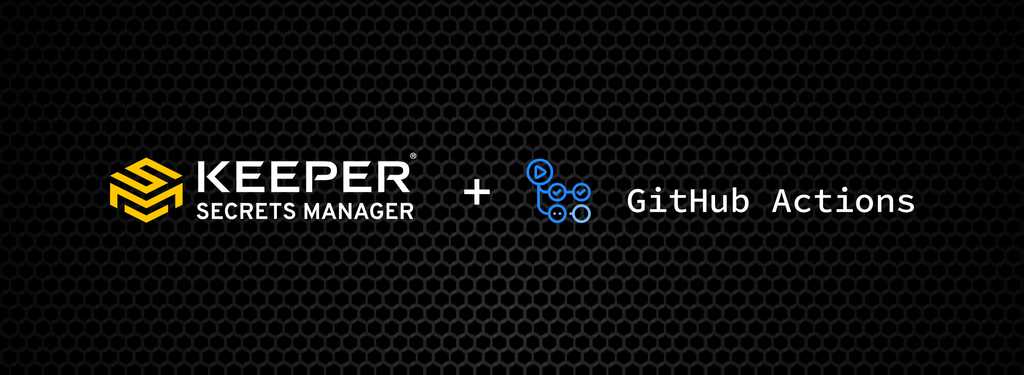
Figure: An enterprise password/secrets manager like Keeper with the Secrets Manager add-on and integration with GA or AzDo Advantages:
✅ Top-tier Security - Dedicated systems like Keeper are designed with advanced security features.
✅ Streamlined Management - Centralize not just CI/CD secrets, but potentially all organizational secrets.
✅ Granular Control - Control who can access what, with full audit trails.
✅ Integrations - Seamless integration with CI/CD platforms reduces friction and the potential for errors.Conclusion:
Leveraging specialized tools reduces manual overhead, boosts security, and ensures a smooth CI/CD process.
Note that in all of these cases, you still need at least one secret stored with your pipeline, whether that's a service principal to log in to Azure to retrieve secrets from Key Vault, or Keeper Secrets Configuration (or equivalent) to access your enterprise secrets manager. Note that if you require different permissions for different workflows or repositories, you may end up with as many secrets in your pipeline tool as if you had the target secrets themselves there.
This may seem counter-productive, but in most cases this is still a better way to manage your secrets, as you still have enterprise controlled access and governance, and a single source of truth.
Remember, the ideal approach may vary based on the size of the organization, the nature of the projects, and specific security requirements. But centralizing and bolstering security around secrets is always a prudent approach.
If you are using Azure DevOps, there's an awesome Hosted Build Server option you can use to perform your builds with little to no setup. But if you're working on a project that has continuous integration and a long build time, it's not long before those build minutes start to add up.
To reduce your build costs, you could reduce the number of builds or try to reduce the build time. Continuous integration is very important so you don't want to turn that off, and we encourage checking in early and often. Reducing the build time is a nice idea, but you can't always reduce it enough to make a difference.
For large, expensive projects, the best option is to configure an on-premises build server rather than using hosted builds.
To configure an on-premises build server for Azure DevOps, check out Anthony Borton's great walkthrough.
Once you have a build server configured, you'll be able to see the build controller as an option when you configure a new build definition.
